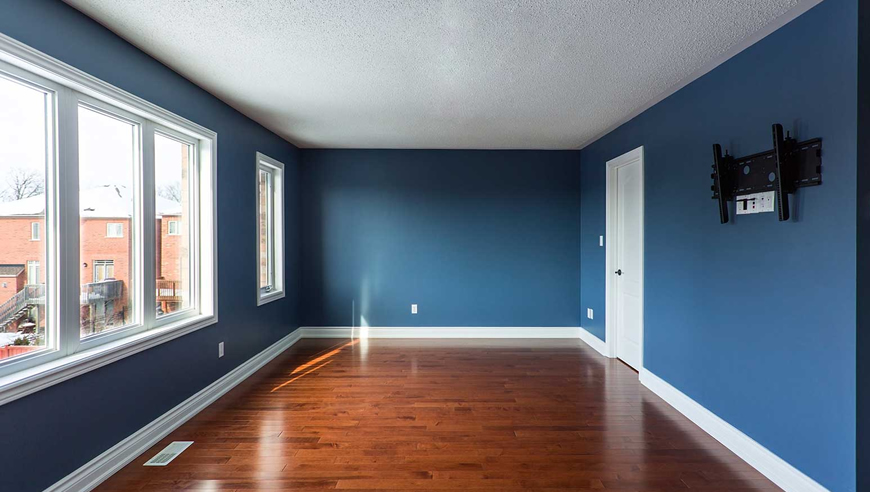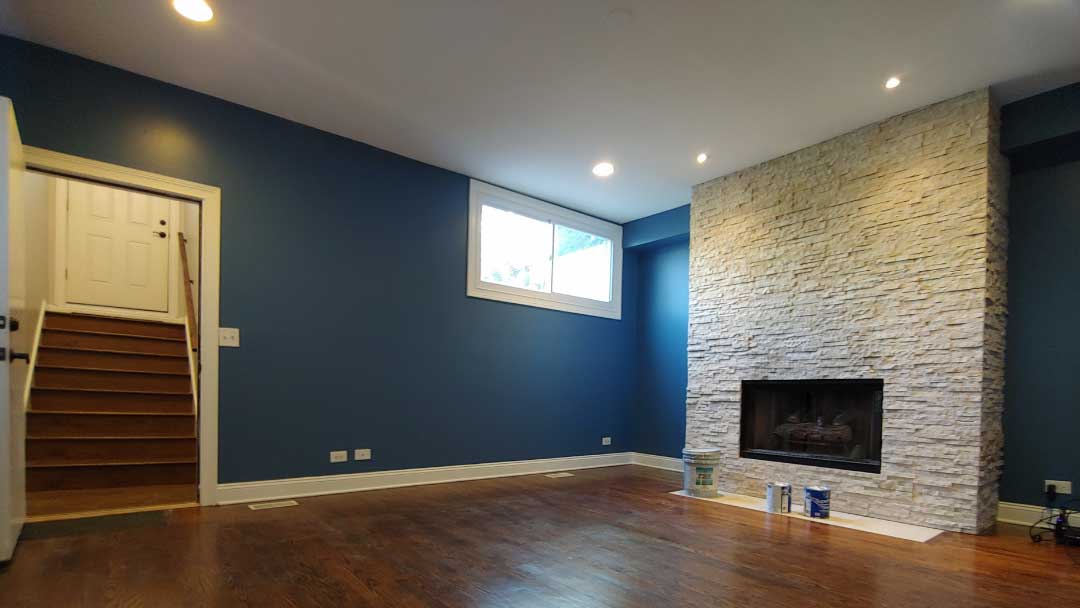Enhance Your Interior Decoration With Comprehensive Shade Consultation
The integration of shade appointment right into indoor design offers an unique possibility to fine-tune and elevate the visual and psychological vibration of a space. By engaging with an experienced color specialist, you can navigate the intricacies of color choice, guaranteeing that your options not just complement building features however also reverberate with individual style and mental effect.
Benefits of Shade Assessment

Moreover, color consultation aids in optimizing natural light and enhancing spatial perception. Lighter colors can make a room appear even more expansive, while darker tones develop an intimate setting. Cleveland Metro Painting Specialists. This tactical application of shade can considerably affect the general atmosphere of any kind of indoor room
Furthermore, expert consultants have a detailed understanding of classic classics and current fads, ensuring that the chosen colors will certainly remain attractive gradually. This insight can conserve customers from costly redesigns in the future. Shade examination encourages customers by giving them with a clear vision and instructions, promoting self-confidence in their layout choices and ultimately leading to an extra gratifying and successful interior layout result.
Understanding Color Psychology
The value of shade psychology in indoor design can not be overstated, as it delves into the psychological and emotional results that different hues can evoke in people. Colors can influence mood, behavior, and even productivity, making them a critical factor to consider in any layout project.
For circumstances, cozy colors such as red, orange, and yellow are frequently associated with power and heat. They can stimulate feelings of exhilaration and convenience, making them suitable for social areas like living kitchens or rooms. Alternatively, awesome shades like blue, green, and purple tend to evoke peace and harmony, making them excellent for rooms or reflection locations.
Furthermore, the usage of neutral tones can produce a balanced environment by enabling the bolder colors to attract attention without overwhelming the senses. Understanding these psychological effects makes it possible for designers to create areas that not just look visually pleasing but likewise promote emotional health.
Integrating color psychology into interior decoration entails a thoughtful option of shades tailored to the designated function of each space, ultimately boosting the total experience for its residents. This understanding is important for achieving a harmonious and functional indoor atmosphere.
The Color Wheel Discussed
Understanding the partnerships between hues is crucial for effective indoor style, and the color wheel acts as an important tool in this process. The shade wheel, created by Isaac Newton in the 17th century, shows the spectrum of shades prepared in a circular layout. It consists of key colors-- red, blue, and yellow-- that can not be produced by blending other colors. Additional colors, created by incorporating main shades, consist of eco-friendly, orange, and purple. Tertiary colors result from mixing a key and a second shade, leading to colors such as blue-green and red-orange.
The shade wheel assists designers realize the relationships between colors, including corresponding, analogous, and triadic plans. Corresponding shades, positioned opposite each various other on the wheel, produce vibrant contrasts that can invigorate an area. Comparable colors, situated next off to each other, provide a unified and cohesive look. Triadic plans utilize 3 equally spaced colors, using equilibrium and aesthetic rate of interest.
Making use of the shade wheel in interior decoration not just improves aesthetic appeal but likewise stimulates certain emotions and environments, making it an important referral for shade assessment. Comprehending these connections ultimately equips designers to produce spaces that are both useful and aesthetically exciting.
Picking the Right Scheme
Usually, picking the best scheme is a decisive element in achieving an effective interior decoration job. A well-chosen color pattern can combine a room, enhance its functions, and evoke wanted feelings. To begin, think about the objective of the room. Various rooms offer different functions and call for combinations that show their desired usage; for example, peaceful colors such as soft blues or environment-friendlies function well in bed rooms, advertising relaxation.
Following, take right into account the all-natural light readily available. Light can substantially modify exactly how shades show up, so it is important to examine the room at different times of the day. Furthermore, take into consideration existing architectural aspects and furnishings. An unified combination needs to complement these features, developing a natural look throughout the area.
When choosing shades, make use of the 60-30-10 policy, which suggests that 60% of the area should be a dominant color, 30% an additional color, and 10% an accent shade. This proportion ensures balance and aesthetic interest (Cleveland Metro Painting Specialists). Sample colors on the wall surfaces before committing, as this permits you to see just how the hues connect with one another and the overall ambiance they produce in your indoor design job.
Dealing With a Shade Professional

When dealing with a color specialist, the procedure commonly starts with a preliminary appointment. During this meeting, you'll discuss your vision, preferences, and the existing aspects in your space. The professional will certainly examine your demands and might recommend certain shade combinations that straighten with Color Consultation in Lakewood your goals.
After developing a direction, the click here now professional will supply samples and aesthetic help to help you envision the recommended color pattern. This step is essential, as colors can show up in a different way under varying lighting problems.
Additionally, a shade expert can direct you in picking corresponding furnishings, art work, and devices to harmonize with your selected palette. By collaborating very closely, you can achieve a polished aesthetic that elevates your interiors and creates a welcoming atmosphere. Inevitably, the experience of a shade consultant can dramatically improve the overall influence of your design project.
Final Thought
In summary, comprehensive shade appointment serves as a crucial device for enhancing indoor design. By leveraging specialist expertise of color psychology and spatial characteristics, a customized color combination can be developed to stimulate certain feelings and develop an unified environment.
By engaging with a seasoned color specialist, you can browse the intricacies of shade selection, making sure that your options not just complement architectural attributes yet likewise resonate with individual style and psychological influence. It makes up main colors-- red, blue, and yellow-- that can not be produced by blending other colors.The shade wheel assists designers realize the relationships in between colors, consisting of corresponding, similar, and triadic systems.When choosing shades, make use of the 60-30-10 guideline, which suggests that 60% of the room need to be a leading shade, 30% a secondary color, check these guys out and 10% an accent color. By leveraging professional expertise of shade psychology and spatial dynamics, a tailored shade combination can be developed to stimulate specific emotions and produce an unified atmosphere.